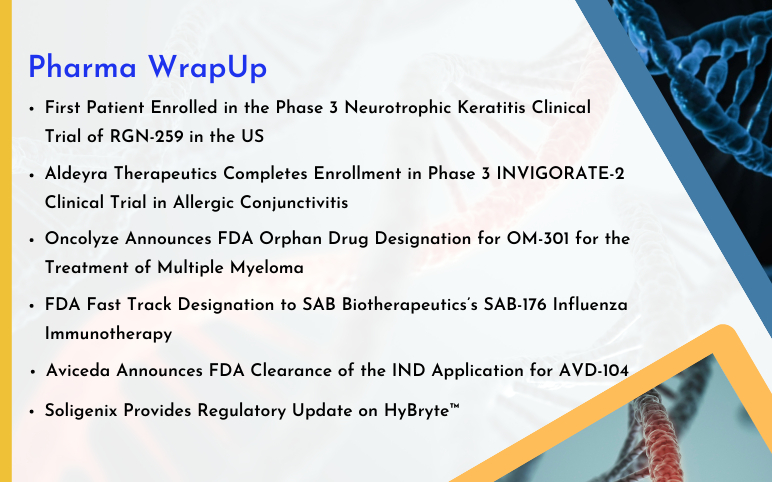More than 50 million Americans suffer from allergies each year. They are the 6th leading cause of chronic illness in the U.S. with an annual expenditure of USD 18 Billion. For some allergies mean constant sniffle, sneeze or cough due to occasional weather change, dust or air, whereas for others it can be due to known food items, or another external element.
Ocular allergies are not rare. In the U.S., an estimated 20 per cent of the population suffers from an ocular allergy. Eyes are so prone to get affected by the allergens because of their vulnerability and direct exposure to the external environment.
Allergic Conjunctivitis
One of the most common Ocular allergies is Allergic conjunctivitis (A.C.), which usually leads to redness, and swelling in the eyes, decreasing the quality of life. The allergy often goes underdiagnosed or misdiagnosed as the Allergic conjunctivitis symptoms are present in 30–71% of patients with allergic rhinitis. Other times the symptoms are not taken seriously. Also, most people suffering from Allergic conjunctivitis often continue their routine life without seeking professional medical help.
Allergic conjunctivitis affects more than 64,000,000 people out of which the highest diagnosed A.C. prevalent cases were seen in the United States, followed by EU5 and Japan. Among EU5 countries, Germany has the highest Allergic conjunctivitis prevalent population, followed by Italy. Spain accounts for the lowest number of A.C. prevalent cases.
Allergic Conjunctivitis Therapy landscape
Present Allergic conjunctivitis therapy landscape, as covered by DelveInsight in its Allergic Conjunctivitis Market Insights, is all about the current A.C. therapies, their mechanism of action and their administration route. The primary focus of Allergic conjunctivitis depends on easing off the symptoms associated with the disease.
The primary and foremost Allergic conjunctivitis treatment involves the use of anti-allergic eye drops. If the condition is severe, then the use of steroid eye drops are administered. Additional use of immunosuppressive eye drops, oral steroid medicines, sub-tarsal conjunctival steroid injection, and surgical treatment such as papillary resection is taken into account for severe Allergic conjunctivitis cases.
The present Allergic conjunctivitis market is significantly driven by already existing prescription-based drugs, OTC drugs and the off-label drugs. The available Allergic Conjunctivitis treatment mainly comprises of eight therapeutic classes such as Decongestants/Antihistamines, Corticosteroids, Topical Histamines, Systemic Histamines, Mast cell stabilizers (MCS), Immunomodulators, Nonsteroidal anti–inflammatory drugs (NSAIDs) and Dual Acting Antihistamines/Mast cell stabilizer.
The Allergic Conjunctivitis therapeutic market of in 7MM was estimated to be USD 1617.9 million in 2017, which is expected to increase by 2028, estimates DelveInsight. The Allergic conjunctivitis therapy market share is mainly dominated by the United States which accounts for the largest Allergic conjunctivitis market size, in comparison to EU5 (Germany, France, Italy, Spain, and the United Kingdom), and Japan. Among the EU5 countries, Germany had the highest Allergic conjunctivitis market size in 2017, while Spain had the smallest A.C. market size.
At present, marketed drugs being used for Allergic Conjunctivitis includes decongestants (Lotemax, Alrex), mast cell stabilizers (Alocril, Pataday), dual-action antihistamines (Patanol, Beprev), and many more. Despite the availability of approved drugs, the Allergic conjunctivitis therapy market has a scope for a lot of better treatment options. Most of the patients do not respond to antihistamines after which corticosteroids are prescribed. However, the use of corticosteroids and other more potent drugs may lead to a variety of ocular toxicities.
Allergic Conjunctivitis Pipeline
The Allergic conjunctivitis market is expected to fuel in the coming years, as forecasted by DelveInsight. The dynamics of Allergic conjunctivitis market is anticipated to change in the coming years owing to the expected launch of emerging therapies during the forecasted period 2018-2027.
Emerging therapies such as Reproxalap Ocular (ADX-102; Aldeyra Therapeutics), PRT-2761 (ORA, Inc.), OTX-DP (Ocular Therapeutix, Inc), Bilastine (Faes Farma), and Tacrosolv (Marinomed Biotech).
Allergic Conjunctivitis Unmet needs
Till date, no specific test is available for the diagnosis of the whole spectrum of different forms of ocular allergy. The diagnosis of ocular allergy is based on clinical history and signs and symptoms. The support of in vivo and in vitro tests for specific allergen is required for the identification. The lack of proper diagnosis of ocular allergy is considered a medical need not only for allergists but also for ophthalmologists.
Also, most patients do not respond to present approved Allergic conjunctivitis therapies and drugs. The limited number of Allergic conjunctivitis therapy choices and the lack of potent drugs with long-term safety are some of the unmet needs in the field of Allergic conjunctivitis.
This creates an opportunity for Allergic conjunctivitis market a wider variety of effective therapies, as well as, potential therapies that are suited for long-term use.
From a commercial perspective, companies developing future pipeline products will need to have a novel mechanism of action and show significant overall efficacy benefits over the current standard-of-care.
However, an increase in the awareness about allergic conjunctivitis among patients, medical communities, and people associated with this disease is one of the major drivers for the growth of the global allergic conjunctivitis market.



